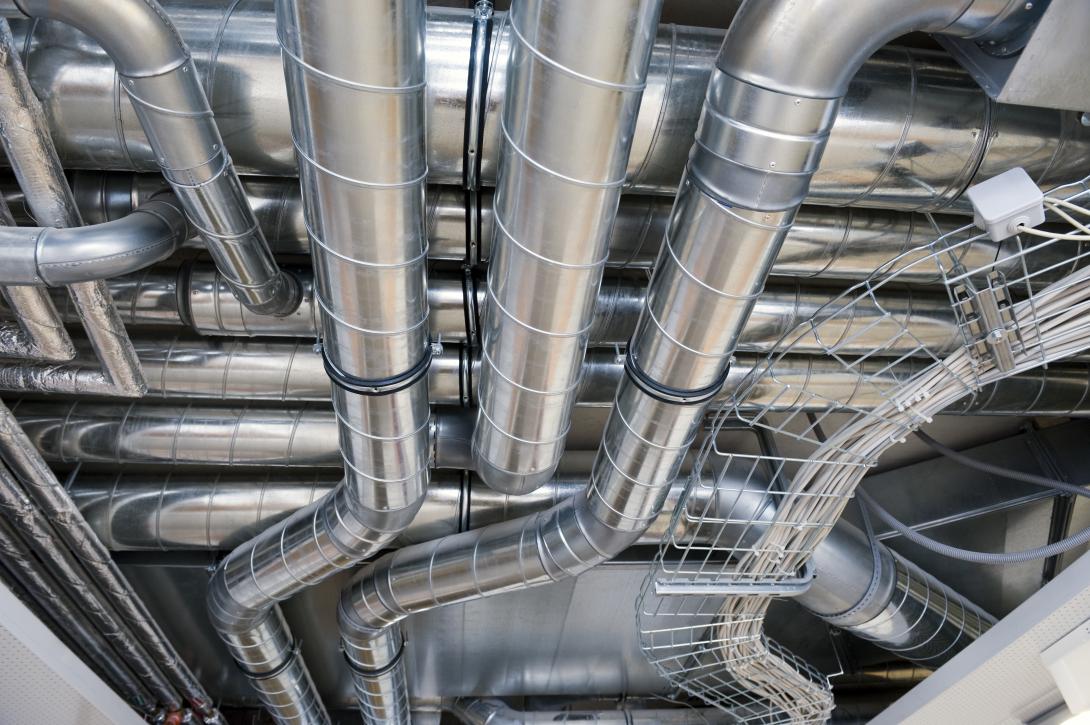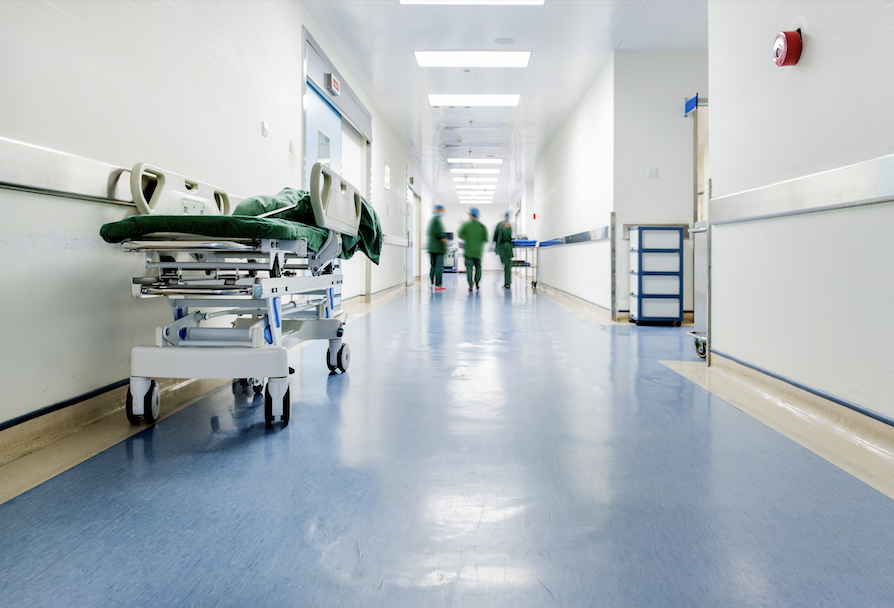Building managers will have to pay close attention to the cleanliness of their ventilation systems in the wake of the Covid-19 lockdown, according to the Building Engineering Services Association (BESA)
As buildings start to re-open, the importance of complying with industry standards, keeping comprehensive records and using competent companies to carry out ventilation hygiene work will take on even greater significance due to the problems created by the coronavirus, a group of experts told a recent BESA webinar.
As part of efforts to cut costs in the wake of the disruption, some businesses may look to reduce the frequency of cleaning, but this should only be done in a planned way, they said.
Gary Nicholls, managing director of ductwork and legionella risk specialists Swiftclean, said the hospitality sector had been hit particularly hard, but cutting back on ventilation hygiene could increase the risk of fires being spread by poorly maintained kitchen grease extract systems.
He said: “We need to keep grease build up below 200 microns to minimise risk. Owners should look at how frequently they were having systems cleaned before the lockdown and compare that with their expected turnover.”
Nicholls said it was vital that any changes were supported by accurate records to satisfy fire risk assessors and insurance companies.
Investigations
Nicholls continues: “In many fire investigations, there is a complete lack of adequate post-clean documentation to prove if the system had been cleaned properly.”
BESA publishes the ventilation hygiene industry guide to good practice TR19 – and recently added a specification aimed specifically at kitchen extract cleaning. ‘TR19 Grease’ includes a schedule explaining the link between the frequencies of cleaning required and the average daily build-up of deposits in the extract system to help manage fire risks.
The chair of BESA’s Ventilation Hygiene group told the webinar that building managers should also take similar care of their supply air ventilation systems as occupancy levels start to rise again.
George Friend said there was no direct link established between the spread of the coronavirus and the cleanliness of ventilation, but that should not mean systems are not cleaned. Current guidance from the industry and healthcare experts is to provide maximum levels of outside air and avoid recirculation to protect against the virus.
He said: “There have been ventilation hygiene standards in place for many years; so we are not asking people to do anything new. However, it is more important than ever if systems are operating on full fresh air that ductwork is properly clean. Building managers should also consider whether their current ventilation strategy is still fit for purpose. Many are changing layouts and having new partitions installed to maintain social distancing, which will have an impact on airflows around the occupied spaces.”
He also said it was important to carry out a comprehensive survey of the ventilation as some places, such as toilet extracts, were often overlooked.
TR19 was revised in 2013 to mirror the international standard BS EN 15780 that was published in 2011 and established safe levels of ventilation hygiene for all types of buildings. HTM 03-01 also sets parameters for hospitals and other healthcare facilities.
Buildings are separated into low, medium and high risk categories in the standard; and Mr Friend suggested that owners may decide their facility needs to move into a higher risk category as a result of changes brought about by the crisis. This will mean it would be subject to more frequent ventilation cleaning.
TR19 provides the methodology for carrying out hygiene work in line with the standards and for keeping comprehensive, accurate records of cleaning. It also links to the Ventilation Hygiene Elite (VHE) scheme, which is operated by BESA’s certification arm BESCA.
This is a self-certification system allowing firms to demonstrate compliance and competence and is the only way for firms to prove they are carrying out work in line with TR19.
Duncan Sibbald, head of certification at BESA, commented: “There is now much greater focus on the whole area of competence and compliance in light of the changes coming through the Hackitt Review. Companies will have to provide proper evidence of their competence under the new regulatory regime. The VHE scheme was developed by the industry for the industry and allows firms to self-certify and provide reassurance to the client that their system has been cleaned to the right standard.”
Golden thread
Sibbald added that the scheme was recognised by the RISCAuthority, which is backed by insurance companies. It is also an example of the kind of record keeping required by the Hackitt recommendations for a ‘Golden Thread’ of information to support the safe operation of buildings.
He said: “Ventilation hygiene can often seem like an uphill battle because so many building owners just want a certificate and don’t really care about the levels of competence required, but the greater focus on building safety is changing that now. The levels of risk are better understood and this scheme creates a level playing field where everyone must demonstrate they are working to the same robust level of compliance.”
The World Health Organisation (WHO) has also acknowledged the threat posed by airborne transmission of the coronavirus, which reinforces the need for correct operation of ventilation systems.
Its officials said ‘evidence was emerging’ that Covid-19 can spread through the air in enclosed spaces. A number of scientists have, therefore, pointed out that building ventilation systems will be crucial in limiting the chances of ‘super spreader’ events in enclosed environments that could spark a second wave of the pandemic.
Benedetta Allegranzi, the WHO’s technical lead for infection prevention and control, said that evidence emerging of airborne transmission of the coronavirus in ‘crowded, closed, poorly ventilated settings…cannot be ruled out’.
The WHO updated its position after receiving an open letter written by 239 researchers in the fields of virology, aerosol physics and epidemiology from 32 countries. They highlighted evidence that showed tiny particles containing the virus could become suspended in the air.
One signatory, Professor Benjamin Cowling of Hong Kong University, said aerosol transmission meant building managers needed to think about ‘how to prevent super spreading events, larger outbreaks that occur in indoor environments with poor ventilation’.
Schools are a key area of concern with more children now returning to poorly ventilated classrooms. A survey of 20 UK classrooms carried out by National Air Quality Testing Services (NAQTS) revealed very low air change rates that could increase the risk of virus transmission.
Douglas Booker, NAQTS chief executive, said: “Our study showed that some classrooms had air change rates below 0.5 per hour and that even small increases in flow rates could significantly reduce the risk of infection. Raising airflows from zero to 100 m3/hr cuts the risk by up to 60 per cent. However, there are gradually diminishing rates of return from increasing it beyond that level.”
Good investment
Speaking during another webinar hosted by BESA, Booker said it was important to focus on what was ‘reasonably achievable’, particularly in an education setting where budgets are constrained, but that low cost adjustments to ventilation were a good investment.
He commented: “The important thing is having quality information and we are using the level of CO2 to show whether the ventilation is working as intended. This crisis is an opportunity to improve the IAQ performance of buildings for the long-term, but we need to focus on affordability. There is a lot of money going into shiny new academies, but that risks increasing inequality even further by leaving older school buildings behind.”
Booker said the WHO announcement and growing awareness of the risks posed by airborne pathogens inside buildings would spark greater demand for the specialist expertise of the building engineering sector. He told the BESA webinar: “If a pandemic that forces people to spend almost all of their time indoors does not change attitudes to indoor air quality, then nothing will.”





